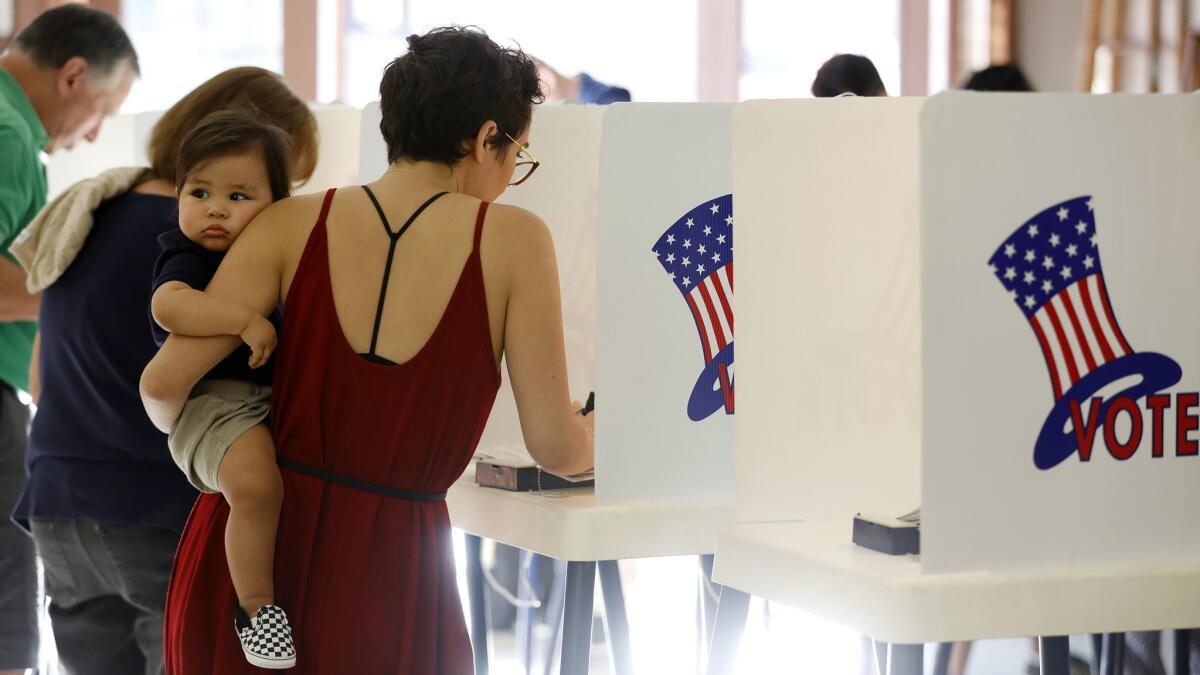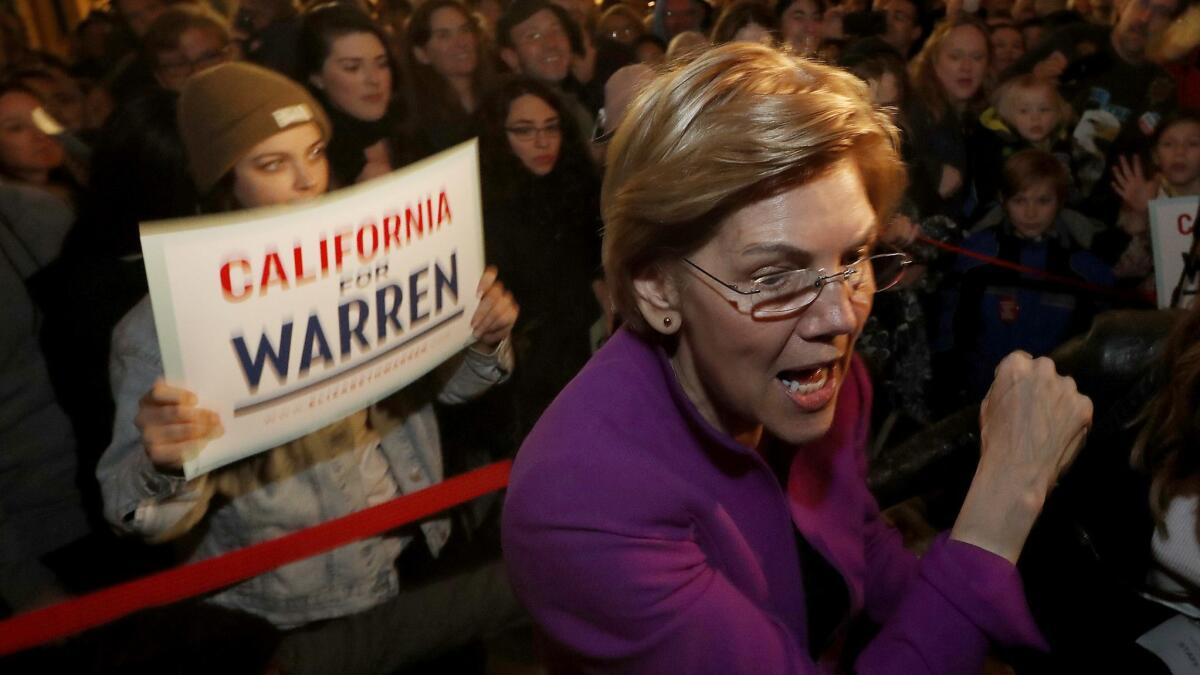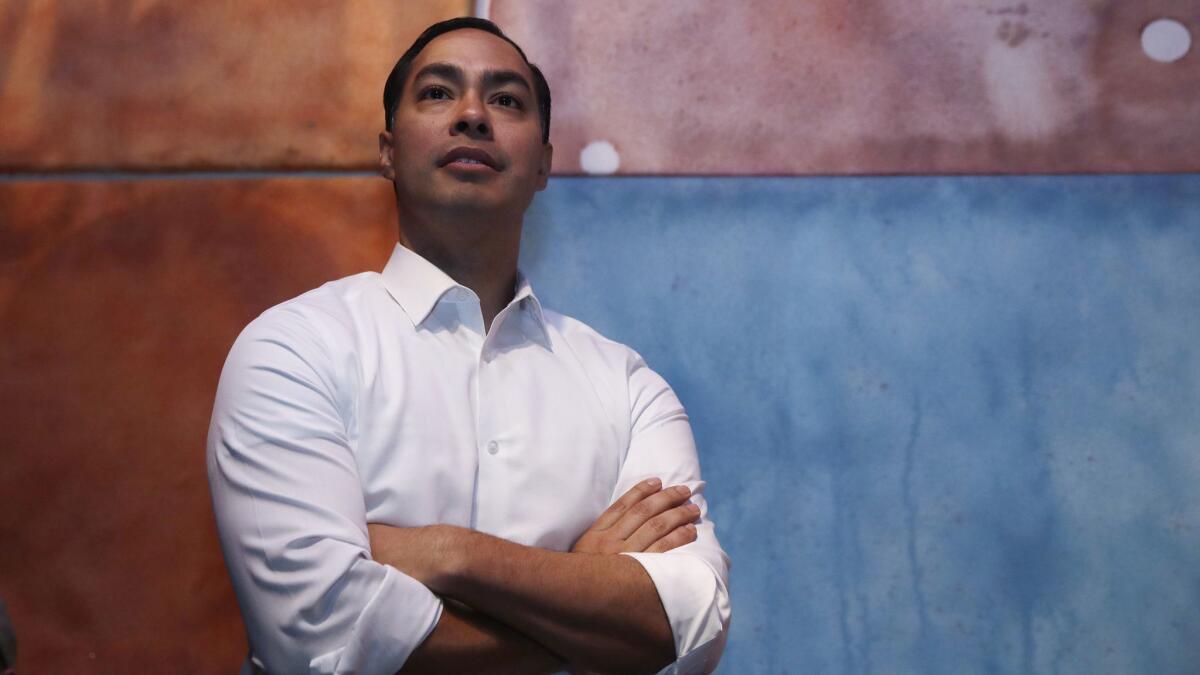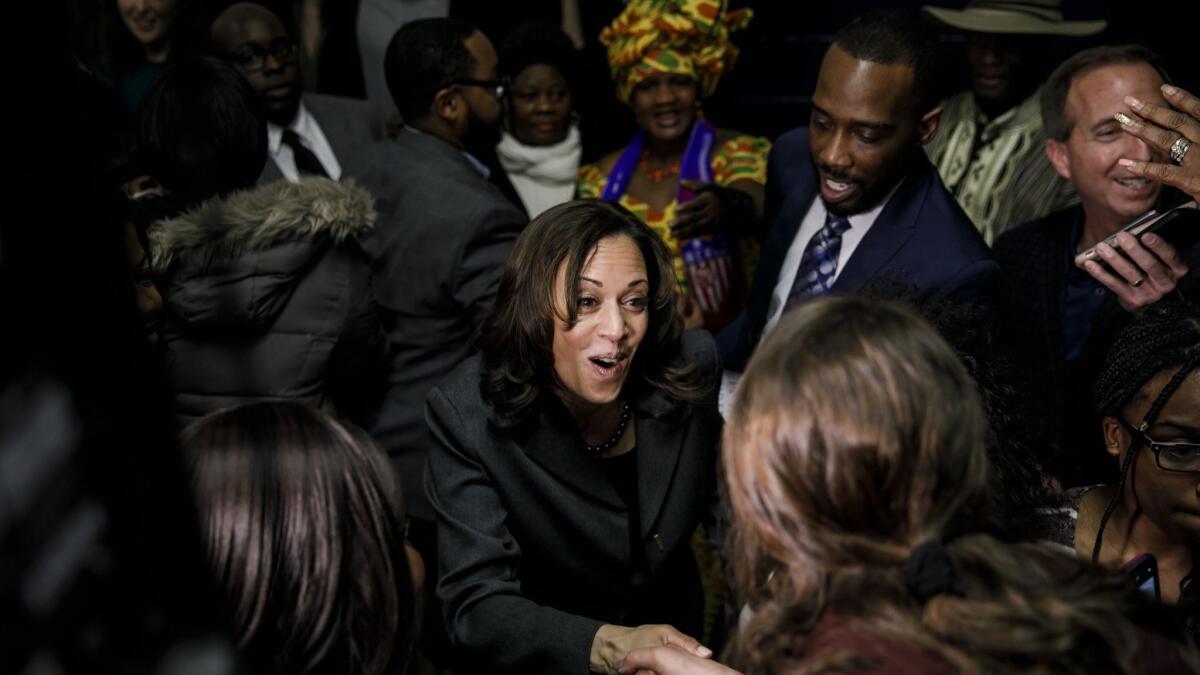Q&A: California’s presidential primary: Here’s what you need to know

With California’s 2020 presidential primary a year away, Democrats vying to challenge President Trump have started swinging through the Golden State.
True, much of their time is spent behind closed doors, at cocktail parties and swanky dinners, where they hit up Hollywood and Silicon Valley types for money to spend in places like Iowa and New Hampshire.
But the shift in the state’s primary from June to March has created at least some incentive for candidates to show their faces in public, as Democratic Sen. Elizabeth Warren of Massachusetts did recently when she took questions before a full house at the Alex Theatre in Glendale. Another contender, former Housing Secretary Julian Castro, campaigned Friday in Anaheim and will speak to a Chicano studies class Monday at UCLA.
In 2008, the Iowa Democratic caucuses set a record with nearly 240,000 participants. Compare that with California, where 14 million residents are eligible to vote in the Democratic primary: 8.6 million registered Democrats and 5.4 million voters who are unaffiliated with a party.
Where does California fit on the presidential calendar?
It comes after Iowa, New Hampshire, Nevada and South Carolina, which continue to hold a privileged place at the start of the nominating process. California is the biggest of 10 states with contests on March 3, or “Super Tuesday.”
With all those voters, I guess California will pretty much choose the nominee!
Don’t count on it.
What?!
The four opening contests don’t involve as many voters or offer nearly as many delegates. Even so, they will have an enormous impact on fundraising, media coverage and the choice voters make in the contests that follow. If history is a guide, they’ll drastically cull the field of candidates before California weighs in.
Just like donors deciding where to send cash and television honchos assigning news coverage, voters quickly make distinctions between winners and losers, pushing at least some candidates into the campaign equivalent of a dead-end street.

Some names will remain on the ballot in California, but think of them as zombie candidates: Politically they’re dead, even if they’re going through the motions of campaigning.
Iowa and New Hampshire could sort through a dozen or more contestants; Californians will be lucky to choose among three or four with a realistic shot at the nomination by the time the primary rolls around.
Yes, but won’t Californians start voting well before March 3?
They can.
Voting by mail will start on Feb. 3, the same day as the Iowa caucuses. But many Californians will probably wait to see the results in the earlier contests before casting their ballots, to make sure they’re not wasting their vote on a candidate with no chance of winning the nomination.
Thus, Iowa, New Hampshire, and to a lesser extent Nevada and South Carolina, will be as important as ever in separating contenders from pretenders.
Can I change my mail-in vote if my candidate drops out before the primary?
Nope. Once you drop your ballot in the mail, you’re out of luck.
But doesn’t California offer a ton of delegates?
Yes, more than any other state. After the party sets the final rules later this year, the number will likely exceed 400, out of the roughly 1,885 needed to win the nomination.

That sounds like an awful lot — and good reason to vigorously compete in California.
It is a lot. But it’s super-expensive to compete in California, which has about a dozen media markets, especially compared with the earlier-voting states.
If a candidate walked away with more than 400 delegates under a winner-take-all system, they would get a big boost toward the nomination, or potentially wield a good deal of influence at the Democrats’ national convention in July.
But the allocation of delegates will likely produce something closer to a split decision, owing to the way they’re divvied up.
Here it gets a bit technical: The largest number of delegates will be divvied in proportion to the vote in each of the state’s 53 congressional districts.
Candidates who fall short of 15% of the popular vote get no delegates. Another big share of delegates will be allocated according to the statewide vote, but none will be awarded to candidates who fail to meet that 15% threshold.
So California won’t be decisive?
It’s highly doubtful, because no candidate is likely to walk away with a monster trove of delegates.
Take, for instance, the last two Democratic primaries. In 2008 and 2016, Hillary Clinton beat Barack Obama and Bernie Sanders, respectively, by 8 percentage points. Not exactly a squeaker. But she netted only 38 more delegates than Obama and 33 more than Sanders, which didn’t turn the nominating contest upside down.

That said, a Super Tuesday headline on election night — Candidate X wins California — could help some when it comes to bragging rights, which can translate into money and momentum even if the result changes once all the ballots are counted.
Huh?
Mail ballots can arrive as late as the Friday after the election and are counted if they are postmarked by March 3. California’s election officials then have a month to verify the eligibility of those ballots. That means, in a tight race, the outcome reported election night could end up being different a few weeks later.
Well, at least Kamala Harris can count on carrying her home state!
Not necessarily. It’s true, California’s junior senator starts with an advantage, having three times won statewide elections. But history shows that voters don’t want to waste their vote on a candidate going nowhere, even if they do have a local return address. In 1980, then-Gov. Jerry Brown finished third, far behind then-President Carter and Massachusetts Sen. Edward M. Kennedy.
In 1992, as the state’s former governor, Brown finished a distant second behind Arkansas Gov. Bill Clinton.
That’s why Harris’ campaign is placing a premium on South Carolina’s primary, hoping a win there will launch her toward victory in the California primary three days later.

What about Republicans?
For now, President Trump faces scant competition, although former Massachusetts Gov. William Weld has opened an exploratory committee.
Do Republicans use the same system as Democrats?
No. Only registered Republicans can vote in the GOP primary.
Also, most of the Republican delegates are awarded on a winner-take-all basis — 159 by congressional district and 13 more for the statewide winner. In 2016, California’s 172-member delegation to the Republican National Convention in Cleveland was the biggest of any state and they all went to Trump.
So once again Iowa and New Hampshire will have all the fun?
Well not all the fun. The average February temperature in those states is in the 30s. Kick back on the beach as they shiver through their contests. You might feel better.
CALIFORNIA COUNTDOWN
How California’s early primary illustrates the state’s political inferiority complex
Democrats, facing a big candidate field, ask: Who can beat Trump?
In Kamala Harris, a sequel to Ronald Reagan?
More to Read
Get the L.A. Times Politics newsletter
Deeply reported insights into legislation, politics and policy from Sacramento, Washington and beyond. In your inbox three times per week.
You may occasionally receive promotional content from the Los Angeles Times.












